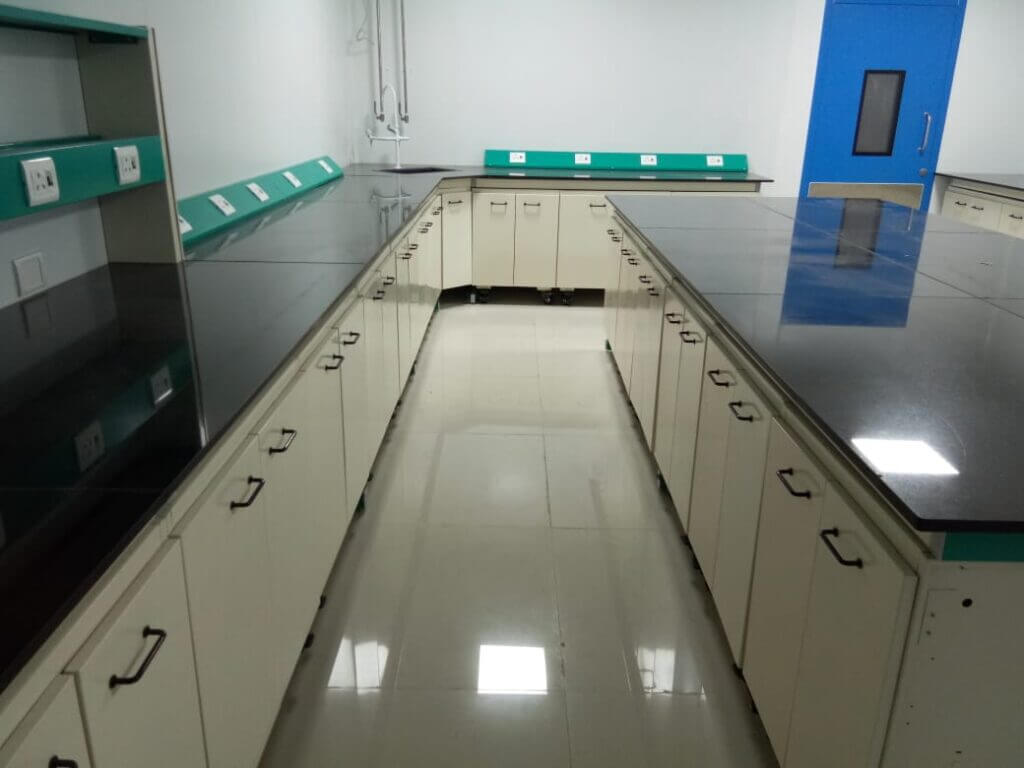Laboratory Utilities FAQs

FAQs
Laboratory utilities and scientific furniture are essential services and installations that support the operation of a lab. The laboratory workstations need lab utilities to perform safety tasks and functions. The important components of utilities are electrical power, water supply( cold+hot), gas lines, HVAC systems, waste disposal, and specialized laboratory furniture and fixtures.
Laboratory workstations attached to some important utilities play an essential role in maintaining a safe and better performance of the lab environment. Furthermore, utilities in the laboratory ensure that experiments can be conducted properly, equipment operates correctly, and safety standards are met.
A successful laboratory utility system perhaps has become the most important thing of all. There are emerging trends that involve assessing the specific needs of the lab, planning the layout of utilities like gas, water, and electricity, ensuring compliance with safety standards, and integrating systems that can support both current and future research needs.
Laboratory safety is considered an essential component for performing scientific research and development and protecting laboratory workers from a wide range of potential hazards. The laboratory designs and utilities include proper ventilation, emergency shut-off systems, regular maintenance and inspections, appropriate storage for hazardous materials, and adherence to safety regulations and standards.
There are several approaches to optimizing energy efficiency in laboratory utilities. They have become an integral part of the era of modern power systems that include the use of energy-efficient equipment, cement smart HVAC systems, insulating properly, employing energy monitoring systems, and adopting sustainable practices such as recycling and waste reduction.
Gas utilities are critical components when it comes to research and scientific development. Appropriate gas utilities used in laboratories include natural gas, nitrogen, oxygen, carbon dioxide, argon, and specialty gases depending on the specific requirements of the experiments and equipment.
Maintaining laboratory utility systems is indispensable in performing countless scientific endeavors and various experiments. You can schedule regular inspections for servicing of scientific equipment, calibration of instruments, replacement of worn-out parts, and ensure that all safety protocols are followed diligently. This can help maintain a permanent record for day-to-day research and development in the laboratory.
There are many effective and best practices for waste disposal in laboratories and these toxic waste products can be dangerous to human health. The best approach for trash disposal includes segregating the waste types, using designated containers for hazardous and non-hazardous waste material, following proper labeling, and ensuring that disposal methods comply with local and federal regulations.
HVAC systems( Heating Ventilation Air System) are designed to maintain a safe working environment in the laboratory while performing research. These systems help in maintaining the proper temperature, humidity, and air quality, which are essential for the accuracy of experiments and the safety of personnel. Additionally, they also help in controlling the spread of contaminants.
The life science industry( laboratory) should always keep abreast with the rules, regulations, and strict guidelines to set a safe and healthy working place. You are recommended to stay updated with local, state, and federal guidelines, conduct regular audits, train staff on compliance issues, and work with experts to design and maintain systems that meet all regulatory requirements.


